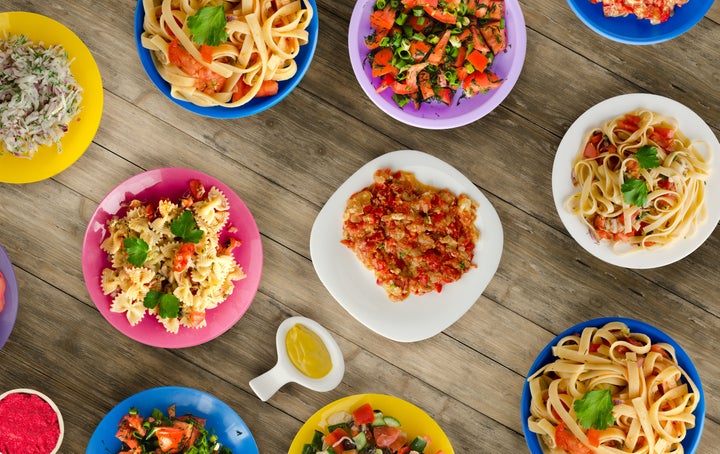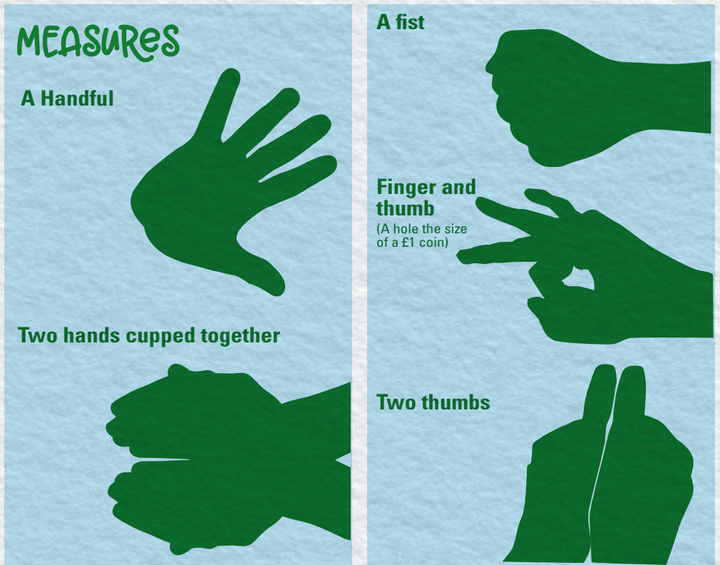If you end up with a ridiculously large pile-up every time you cook pasta, help is (quite literally) at hand.
The perfect portion of dried pasta for your size is two cupped handfuls, according to a new food guide, which aims to give practical tips on portion size.
In order to maintain a healthy weight, you should also stick to around three handfuls of flaked breakfast cereal or muesli for breakfast and ditch jacket potatoes that are larger than your fist, according to the guide.
Meanwhile that elusive perfect portion of spaghetti can be achieved by bending your forefinger to your thumb, roughly creating the shape of a £1 coin. And when it comes to hard cheese (like cheddar), you should stick to two thumbs’ worth.

The guide has been created by the British Nutrition Foundation (BNF) to supplement the government’s Eat Well guide to help us understand not just which foods to eat, but how often and in what quantities to eat them.
Research from the BNF found the majority of us are currently underestimating the amount of food we’re putting on our plate. For example, the guide recommends eating around 180 grams (254kcal) of pasta per portion, but the most commonly consumed size was found to be 230 grams (324kcal).

The BNF guide also describes which food groups we should focus on heavily, and which we should save for treats. It recommends we consume:
Fruit and vegetables – 5+ portions per day
Starchy carbohydrates – 3-4 portions per day
Protein foods – 2-3 portions per day
Dairy and alternatives – 2-3 portions per day
Unsaturated oils and spreads – small amounts
While the guide should help inform portion size, Bridget Benelam, nutrition communications manager at the BNF, said the rules can be taken with a pinch of salt.
“While the types of different food and drinks we need apply to all healthy adults, we understand that no two individuals are the same and the amount of food we need varies from person to person,” she said.
“If you’re tall or very active you may need more and could have larger portions, and if you have a slighter build or are trying to lose weight, you may need smaller portions.”
The BNF has packaged its portion size guidance into three free resources: a fridge poster which provides an overview of the advice; a booklet which expands on how to put the portion guidelines into practice; and a longer digital resource, which is downloadable, with advice on portion sizes for a wide
variety of foods.
Visit nutrition.org.uk/findyourbalance for the full guide and more details.
